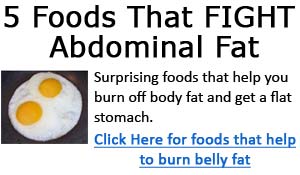As blood flow increases to the active muscles, more FFA's are delivered to the muscles that need them.
An important enzyme called lipoprotein lipase (LPL), then helps the FFA's get inside the mitochondria of the muscle cell, where the FFA's can be burned for energy. If you've ever taken a biology class, then you've probably heard of the mitochondria. This is the "cellular powerhouse" where energy production takes place and this is where the FFA's go to be burned for energy.
When the FFA's are released from the fat cell, the fat cell shrinks and that's
why you look leaner when you lose body fat - because the fat cell is now
smaller. A small or "empty" fat cell is what you're after if you want the lean,
defined look.
It was once believed that the number of fat cells could not increase after
adulthood, only the size of the fat cells could increase (or decrease). We now
know that fat cells can indeed increase both in size (hypertrophy) and in number
(hyperplasia) and that they are more likely to increase in number at certain
times and under certain circumstances, such as 1) during late childhood and
early puberty, 2) During pregnancy, and 3) During adulthood when extreme amounts
of weight are gained.
 Some people are genetically predisposed to have more fat cells than others and
women have more fat cells than men. An infant usually has about 5 - 6 billion
fat cells. This number increases during early childhood and puberty, and a
healthy adult with normal body composition has about 25 to 30 billion fat cells.
A typical overweight adult has around 75 billion fat cells. But in the case of
severe obesity, this number can be as high as 250 to 300 billion!
Some people are genetically predisposed to have more fat cells than others and
women have more fat cells than men. An infant usually has about 5 - 6 billion
fat cells. This number increases during early childhood and puberty, and a
healthy adult with normal body composition has about 25 to 30 billion fat cells.
A typical overweight adult has around 75 billion fat cells. But in the case of
severe obesity, this number can be as high as 250 to 300 billion!
The average size (weight) of an adult fat cell is about 0.6 micrograms, but they can vary in size from 0.2 micograms to 0.9 micrograms. An overweight person's fat cells can be up to three times larger than a person with ideal body composition.
Remember, body fat is basically just a reserve source of energy and fat cells are the like the storage tanks. Unlike a gas tank in your car which is fixed in size, however, fat cells can expand or shrink in size depending on how "filled" they are.
Picture a balloon that is not inflated: It's tiny when not filled with air -
maybe the size of your thumb. When you blow it up with air, it can expand 10 or
12 times it's normal size, because it simply fills up. That's what happens to
fat cells: They start as nearly empty fat storage "tanks" (when you are lean),
and when energy intake exceeds your needs, your fat cells "fill up" like
balloons (not a pretty picture, is it?)
So you don't actually "lose" fat cells, you "shrink" or "empty out" fat cells.
Since fat cells can not only get bigger, but also multiply, you have be diligent
and consistent in your fat-burning lifestyle because even after you shrink your
fat cells, the cells are still there (in your thighs, lower abs, etc), waiting
to be filled up with more fat again, if you're not careful...
So stay active to keep burning fat and avoid consuming more calories than you burn, and your fat cells will get shrunk and stay shrunk!
>> Click here for Tom Venuto's Burn the Fat Feed the Muscle program

 Earlier this week someone in our discussion forum wrote, "I haven't "LOST" any
fat... I know EXACTLY where it went! I got a chuckle out of that because I "got"
the joke, but truth is, most people really don't know how fat cells work, how
the fat burning process takes place or where the fat goes when it's burned .
It's actually quite a complex biochemical sequence of events, but I'll explain
it as simply as possible, so by the end of this article, you'll be a "fat
burning" expert!
Earlier this week someone in our discussion forum wrote, "I haven't "LOST" any
fat... I know EXACTLY where it went! I got a chuckle out of that because I "got"
the joke, but truth is, most people really don't know how fat cells work, how
the fat burning process takes place or where the fat goes when it's burned .
It's actually quite a complex biochemical sequence of events, but I'll explain
it as simply as possible, so by the end of this article, you'll be a "fat
burning" expert!